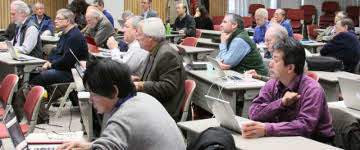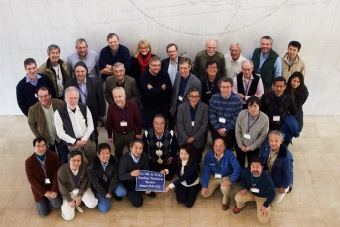Around the WorldFrom CERN Courier: The SuperB approach to high luminosityThe next-generation B factory to be built in Italy will reach new levels in luminosity by employing the innovative crab-waist scheme at the beam collision point. The SuperB concept represents a real breakthrough in collider design. The low-emittance ring has its roots in R&D for the International Linear Collider (ILC) and could be used as a system-test for the design of the ILC damping ring. The invention of the crab-waist final focus could also have an impact on the current generation of circular colliders.
Read more in CERN Courier |
Director's CornerBaseline Technical Review for ILC superconducting RF systemsOn 19 and 20 January 2012, the third Baseline Technical Review to finalise the Technical Design Report baseline was held at KEK laboratory in Japan. The meeting reviewed the proposed cavity gradient performance, cavity integration, and the main linac integration and interfaces to the ILC conventional facilities, including radiofrequency power, control and interfaces to conventional facilities. A special meeting on superconducting radiofrequency costs followed this meeting on 21 January.
|
Image of the week
|
BTR meeting groupies
KEK hosted the third ILC Baseline Technical Review meeting last month. Read more about the main linac and superconducting radiofrequency technology decisions in this issue's Director's Corner.
|
In the News
-
from The Australian7 February 2012THE cult of the celebrity scientist has caused a marked rise in applications for physics degrees in Britain, with some leading universities reporting increases of up to per cent in what has been nicknamed the Brian Cox effect.
-
from SLAC Today2 February 2012The theoretical expectation, based on Kobayashi’s and Maskawa’s very successful theory, is that the positively charged B+ will undergo this decay about as frequently as the negatively charged B– meson.
-
from Physics TodayFebruary 2012Twenty years after puzzling atmospheric ionization led to the discovery of cosmic rays, their investigation opened up particle physics. Now they’re providing a window on extragalactic astrophysics.
-
from Scientific American Blogs31 January 2012But even though protons and antiprotons no longer course through the six-kilometer loop of the Tevatron, life at Fermilab goes on.
Copyright © 2025 ILC International Development Team




